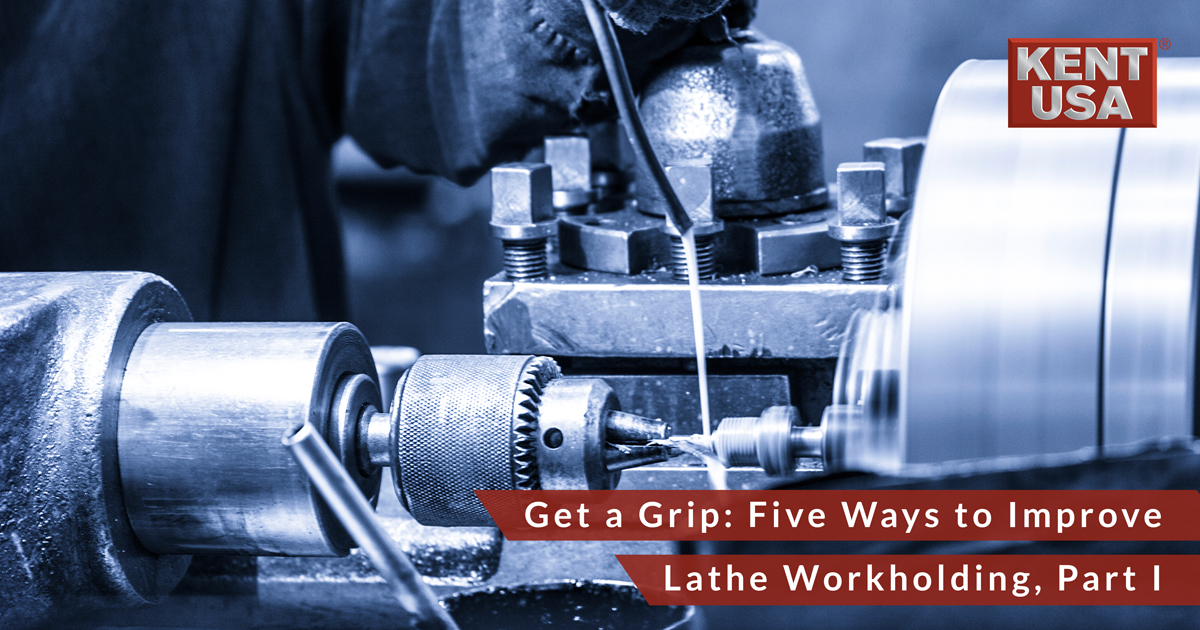Get a Grip: Five Ways to Improve Lathe Workholding, Part I
Of all the accessories found on any engine lathe or tool room lathe, the 3-jaw chuck is easily the most important; unfortunately, it’s also quite often the least appreciated. Without a well-maintained chuck, one with sufficient clamping pressure and jaws that have been bored properly, parts go flying. Here are some tips to make sure this unpleasant and dangerous event never happens to you:
Keep it Clean
From automobiles to fishing reels, every mechanical assembly in the world requires some level of routine maintenance. Lathe chucks are no exception. You can start by keeping it clean. Wipe it down at the end of each day. When you change jaws, pull them out for a quick visual to make sure there are no metal fines or other machining grit present, then apply a small amount of grease to keep everything moving smoothly. With proper care, the chucks that come standard on Kent USA manual precision lathes will last for years.
Take it Apart
Eventually, all lathe chucks must be taken apart, cleaned, greased, and reassembled. How often this task should be performed depends on how much the lathe has been used and how hard it’s been pushed, as well as what kinds of materials are being turned (cast iron, for instance, is notoriously abrasive). It’s fair to say, though, that if the jaws become sticky or difficult to tighten, it’s time for a complete teardown. We’re not going to get into the dirty details of that here, but if you’ve purchased a TRL-1340 precision lathe, RML-1640 precision lathe, or any of the other dozen or so precision lathe models offered by Kent USA, give our service department a call—we’ll be happy to point you in the right direction.
Now that we’ve covered the basics of chuck maintenance, Part II of this series on lathe workholding will discuss hard jaws, boring of soft jaws, and chuck safety. Stay tuned!
Share this article:


